
Coneyl Jay
For many, 2016 is a year that they would like to see the back of, as pharmacy organisations were pitted against a government intent on implementing austerity measures across the NHS. Most notable for pharmacy were the hard-to-stomach community pharmacy budget cuts in England that came into force in December 2016. The story will run into 2017, with two judicial reviews set to consider the government’s approach.
But there have been some positives. The community pharmacy sector harnessed the support of patients, consumers and MPs in its opposition to the cuts, as highlighted by well-attended parliamentary debates.
Other major policy moves include the shift in Scotland to extend the minor ailments scheme, something that many pharmacists in England dream of replicating, and the much-needed reforms proposed for the hospital pharmacy sector in the Carter review.
However, for many in pharmacy, 2016 will be remembered as “the year of the cuts”.
Here are the people behind the biggest stories of 2016:
- The persistent parliamentarian: Michael Dugher
- Care home champion: Sandra Gidley
- Scotland’s driver for change: Martin Green
- Hospital pharmacy reformer: Ann Jacklin
- Pharmacy’s gadfly: Mark Koziol
- Pharmacy’s reluctant minister: David Mowat
- The government’s ally: Keith Ridge
- Guardian of professionalism: Duncan Rudkin
- Navigator of a complex pharmacy contract: Sue Sharpe
- Clinical advocate: Ash Soni
- Solicitor of the public’s affection for pharmacy: Ian Strachan
- Welsh innovator: Rory Wilkinson
The persistent parliamentarian: Michael Dugher

Source: Rex/Shutterstock
Until this year, few people working within the pharmacy sector would have heard of Michael Dugher, the Labour MP for Barnsley East. But since learning of the planned community pharmacy funding cuts after the Department of Health’s announcement in December 2015, Dugher has been one of the most prominent voices campaigning against them.
Dugher brought three debates to the House of Commons, forcing ministers to explain the rationale behind the plans, and highlighted the role pharmacies play in communities. An adjournment debate held on 24 May 2016 coincided with the presentation of a petition against the cuts with more than 1.8 million signatories at 10 Downing Street. This was followed by a one-hour parliamentary debate prompted by an “urgent question to the minister” on 17 October 2016, and then an opposition day debate (called for jointly with the Labour health team) on 2 November 2016; the debates occurred either side of the cuts announcement made on 20 October 2016.
“We know these planned cuts are a false economy because many people who can’t get medical advice or help from their pharmacy are likely to turn up at our already overstretched GP surgeries and A&E units,” Dugher said.
He has also criticised the government’s pharmacy access scheme, which has been introduced to shield around 1,300 pharmacies from the cuts. “My research revealed that barely one in ten pharmacies nationwide are eligible,” he explained.
Care home champion: Sandra Gidley

Source: MAG / The Pharmaceutical Journal
Politically savvy and someone who always speaks candidly, Sandra Gidley was prominent in news coverage of the UK government’s plans to cut funding for the community pharmacy contract in England. With skills honed during her ten years as a Liberal Democrat MP for Romsey in Hampshire, and now as chair of the Royal Pharmaceutical Society (RPS) English Pharmacy Board, Gidley looked for the light beyond the doom and gloom of the cuts.
“We have to devote our energies to making the best of the [pharmacy] integration fund (PIF), pushing positive ideas forward and promoting pharmacists to do that too,” Gidley said in an interview with The Pharmaceutical Journal in February 2016.
Gidley deserves credit for helping to keep the government’s PIF on the agenda, campaigning for the money to be used to improve access to pharmacists’ expertise across all care settings.
Also in February, Gidley launched an RPS report that concluded that pharmacists could improve care for the residents of care homes and reduce medicine waste to the tune of £135m a year. The RPS campaign had the support of the Royal College of General Practitioners.
“Care home residents take an average of seven medicines a day. Without a regular review of what’s still needed, this cocktail of drugs can cause poor health, a lower quality of life and costly unnecessary admissions to hospital,” she said. “The evidence is clear: now is the time for the NHS to act and improve the care of residents by ensuring a pharmacist has responsibility for the whole system of medicines and their use within a care home.”
Scotland’s driver for change: Martin Green
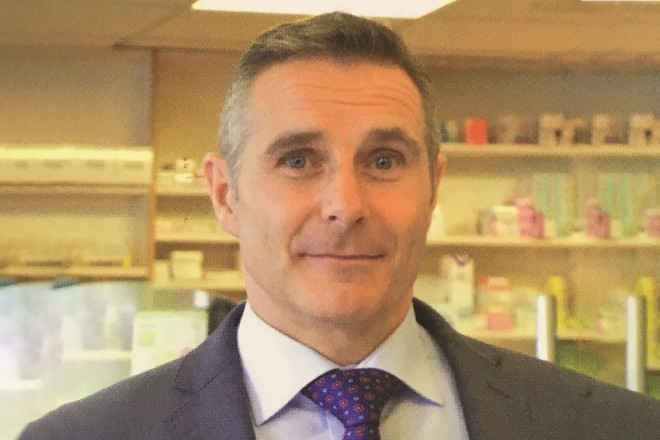
Source: Courtesy of Martin Green
The business-savvy, yet approachable chair of the Community Pharmacy Scotland (CPS) board Martin Green has been pushing for the expansion of Scotland’s minor ailment scheme (MAS) for years (since Nicola Sturgeon was health minister between 2007 and 2012). The national scheme, which is ten years old, is available to around half the population in Scotland, covering children, older people, people with medical exemption certificates and those who receive income support.
A universal service was mooted in the CPS’s pre-election manifesto in September 2015, and got support from Scotland’s first minister in May 2016. But it was not until September 2016 that a pilot study to test the idea in the Inverclyde area in west Scotland was approved. The 12-month pilot is set to start in January 2017 involving 19 pharmacies.
The intention is also to extend the MAS formulary to include a small number of prescription-only drugs, such as antibiotics for uncomplicated urinary tract infections and impetigo, combined oral contraceptives and treatments for exacerbations of chronic obstructive pulmonary disease. While the idea to expand the MAS service was a consensus decision of the CPS board, Green, who owns 17 pharmacies, 2 of which will be in the pilot, is the person behind that team and will be close to the project.
“The expanded MAS is not just about the supply of medicines. It’s very much about pharmacy having a clinical interaction with patients,” he told The Pharmaceutical Journal on 15 November 2016. “We are also looking to rebadge this service from a MAS to try to encourage patients in the NHS to use pharmacy first.”
In addition to the progress seen with the MAS, Scotland’s community pharmacy sector has been granted a £1m rise in funding to £178m for 2016–2017, in stark contrast to the cuts in England.
Hospital pharmacy reformer: Ann Jacklin

Source: Courtesy of Ann Jacklin
Forthright and straight to the point, Ann Jacklin pulls no punches when articulating why the hospital pharmacy sector must embrace the reforms laid out in the Carter review, which was published in February 2016.
The recommendations of the review, which appear to have wide hospital pharmacy support, spell out how acute trusts in England can reduce variation in productivity and efficiency to save the NHS £5bn each year by 2020–2021. Of these savings, £0.8bn could potentially come from “hospital pharmacy and medicines optimisation”.
As the professional lead for the Hospital Pharmacy Transformation Programme at the Department of Health, Jacklin is keen to see Carter’s recommendations implemented. One of the main aims is to direct at least 80% of hospital pharmacist resource to clinical rather than infrastructure services. Others include increasing pharmacist prescriber numbers, moving to electronic prescribing, consolidating medicines stockholding, and modernising the supply chain to reduce the number of deliveries per day.
Jacklin is the person behind Carter’s HoPMoP (Hospital Pharmacy & Medicines Optimisation Project) programme, which aims to aid best practice – by measuring, comparing and contrasting trusts.
“Wherever I go there is unmet pharmaceutical need. I have never met a hospital chief pharmacist who disagreed that they couldn’t do more if their pharmacy workforce had more time with patients,” Jacklin told delegates at the Royal Pharmaceutical Society annual conference in September 2016. “Money is tight so we have got to prioritise and make tough decisions. We must be able to move medicines arounds hospitals more efficiently.”
Pharmacy’s gadfly: Mark Koziol
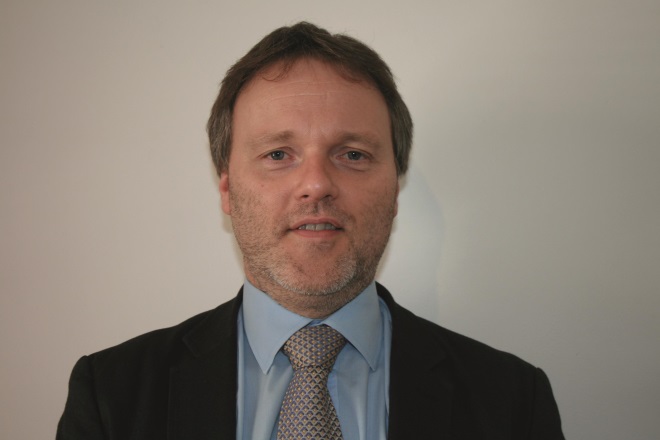
Source: Pharmacists’ Defence Association (PDA) Union
Mark Koziol, secretary general of the Pharmacists’ Defence Association (PDA) Union, continues to campaign against what he sees as the exploitation of employee pharmacists by corporate employers. Koziol has highlighted flaws in pharmacy’s regulatory system that sees pharmacists up before fitness-to-practise panels for falsifying records relating to NHS services, while the system fails to address the underlying problem of employers setting targets for those services. The pressure placed on pharmacists to meet targets set for conducting medicines use reviews (MURs) was highlighted in a PDA survey that formed the basis of a newspaper exposé ‘How Boots went rogue’, published by the Guardian in April 2016. The practice of target setting for MURs, seemingly widespread, was highlighted by The Pharmaceutical Journal in 2013.
The PDA survey, which attracted 1,988 responses from pharmacists, of whom 624 worked for Boots, suggested that “morale across the profession is low, but that Boots pharmacists feel more pressured than those employed by LloydsPharmacy, Asda and the rest”, reported the Guardian.
“The PDA has been providing examples to the GPhC [General Pharmaceutical Council] about how pharmacist professionalism is being undermined by employers for years,” Koziol said. “The GPhC appears unwilling to go after the miscreants, focusing its efforts instead upon individual pharmacists. We need the GPhC to put a lot more vigour behind its efforts to support pharmacists.”
The GPhC decided not to investigate Boots over allegations that it placed unacceptable pressure on pharmacists to meet targets, saying that “these challenges are not unique to pharmacy”, and that it will “work with people and organisations from inside and outside pharmacy to examine and understand workplace pressures across the pharmacy sector”.
Pharmacy’s reluctant minister: David Mowat

Source: Department of Health
David Mowat, the parliamentary under secretary of state for community health and care, has a wide brief that covers 19 separate health areas. He inherited a policy platform for pharmacy from his predecessor Alistair Burt, who delivered the worrying and oft-quoted “3,000 pharmacy closures” line, but who stepped down in September 2016.
Mowat heartened the sector briefly when he told delegates at the Royal Pharmaceutical Society annual conference in September 2016 that the government was going to take time to “make the correct decision” and would not implement the planned funding cuts in October 2016. But the new minister is no reformer and has stuck to the government’s script, finally swinging the axe on the community pharmacy budget on 20 October 2016.
“The [pharmacy] access scheme is the device that will ensure that pharmacies are not closed in a random way,” Mowat told Parliament on 2 November 2016. “It is my belief that there will be a minimal amount of closures. The average pharmacy has a margin of 15%, and the amount of efficiency savings that we are asking pharmacies to make over two years is 7%.
“In addition, the average pharmacy is trading for £750,000 when it closes or merges, even after we announced these efficiency savings a year ago. That value is being retained.”
The government’s ally: Keith Ridge

Source: Nadia Attura / Royal Pharmaceutical Society
The de facto head of the pharmacy profession, Keith Ridge, chief pharmaceutical officer at NHS England, has come under fire in 2016 for his support of government policies that are seen to threaten the community pharmacy network.
There were calls for his resignation online after he misled a group of pharmacy-friendly MPs about the statistics surrounding ‘hub and spoke’ dispensing in March 2016. Ridge said community pharmacists have a “professional obligation” to adopt automated dispensing.
Ridge cited evidence from the literature that the dispensing error rate in community pharmacy in the UK “is around 3%”, comparing this with a rate of 0.00001% for large-scale automated dispensing facilities in Sweden. The error rate for Sweden turned out to be almost double the rate he quoted, an unfortunate mistake given the contentious subject matter, but one he was soon to correct and apologise for. The National Pharmacy Association seized on Ridge’s inaccurate comparison, rejecting the policy proposal because of a lack of evidence.
In June 2016, the government quietly dropped its plans for hub and spoke dispensing (for now, anyway).
Guardian of professionalism: Duncan Rudkin
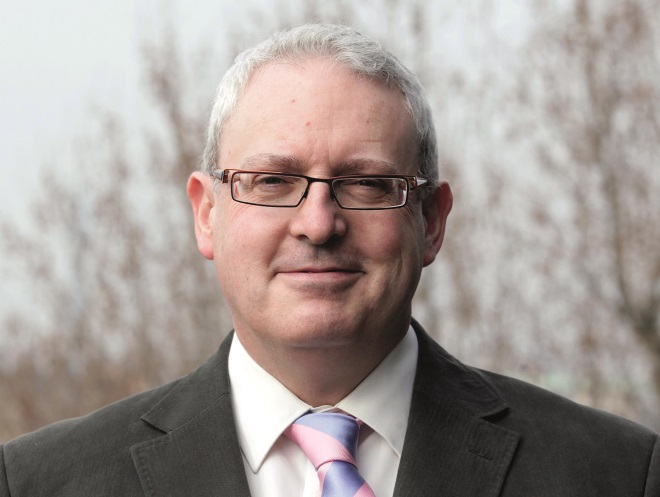
Source: General Pharmaceutical Council (GPhC)
In his role as chief executive of the General Pharmaceutical Council (GPhC), Duncan Rudkin is unlikely to win a legion of supporters, or be interested in doing so. He places great emphasis on ‘professionalism for the benefit of the public’, insisting that standards are upheld to safeguard the health, safety and well-being of patients.
It has been a busy year for Rudkin, who has had to grapple with alleged unprofessional behaviour at some large multiples (resulting from the pressure placed on community pharmacists to reach targets for certain NHS services; see entry for Mark Koziol). He has also had to contend with diversity issues, after a report published in July 2016 showed Black African students did not perform as well in the registration assessment as other ethnic groups. The GPhC held seminars in October 2016 to thrash out both issues, but there have been no concrete actions as yet.
Asked by The Pharmaceutical Journal if the GPhC had the confidence to regulate large companies and tackle issues such as target setting for pharmacy staff, Rudkin said: “We have standards that we set which the owners of those pharmacies must meet. [The standards] are focusing on outcomes because we recognise that the context of a pharmacy that is owned by an individual pharmacist is going to be very different from the context of a pharmacy that is owned by a large chain or may be located within a supermarket.”
Navigator of a complex pharmacy contract: Sue Sharpe
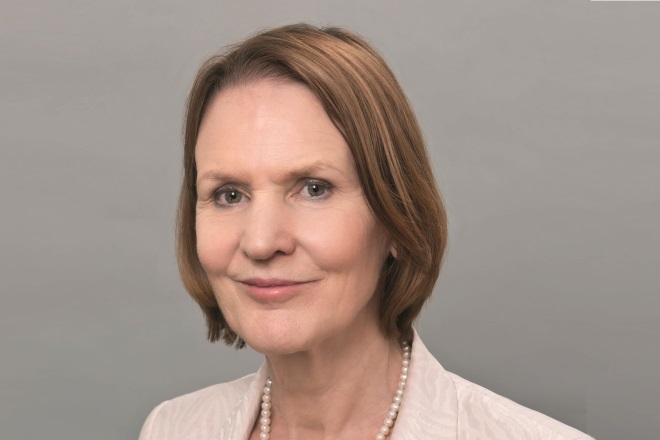
Source: Pharmaceutical Services Negotiating Committee (PSNC)
Sue Sharpe has been steering the Pharmaceutical Services Negotiating Committee (PSNC) since 2001. When appointed as chief executive, she said her greatest challenge was to inspire community pharmacists to feel positive and enthused about the sector. Now 15 years on, cuts to community pharmacy funding and flawed proposals from the Department of Health have arguably brought morale among contractors to a new low.
The PSNC’s counterproposals — which included a “not dispensed” scheme, where pharmacists are paid for checking whether patients need all items on a prescription, and generic substitution, where pharmacists dispense generic alternatives to branded medicines — did not persuade NHS England that pharmacies could make the efficiency savings needed by the NHS without the imposition of a budget cut. Some pharmacy leaders were disappointed that a more united front had not been presented with regard to the counterproposals, which the PSNC did not share with other pharmacy bodies before presenting them to the government.
On 1 December 2016, the PSNC announced it is to seek a judicial review of the decision by the health secretary to implement cuts to community pharmacy funding.
“We cannot accept proposals that will jeopardise the services and supplies that community pharmacies provide to their patients,” Sharpe said in March 2016. “The government wants to develop a clinically focused community pharmacy service but cuts to pharmacy funding that will force contractors to cut staffing is about the worst way to do this.”
Clinical advocate: Ash Soni

Source: Royal Pharmaceutical Society
When he was president of the Royal Pharmaceutical Society (RPS), Ash Soni, a community pharmacist and owner of two pharmacies in south and east London, worked tirelessly to promote the role of pharmacists as clinicians. In office since July 2014, Soni’s tenure was abruptly and unceremoniously brought to an end in June 2016 when he was not re-elected to the Society’s highest governance board by his colleagues on the English Pharmacy Board (EPB) – membership of the Assembly is a prerequisite for any president. This was the first time that a president had lost the role under such circumstances. Coverage of the news by The Pharmaceutical Journal and Chemist & Druggist drew much attention from RPS members, prompting the journal to discuss the relevant governance processes within the Society and whether rules needed to be reviewed.
“I was surprised and wasn’t expecting it to happen quite the way it did,” Soni told Chemist & Druggist in a podcast interview on 25 July 2016. “I was disappointed and quite sad that I wasn’t able to contest the presidency, but the organisation has made the decision it has made.” One commenter on Twitter said: “All I’ve seen is praise for Ash’s approach to the role — adds to the questions of why the EPB voted this way,” while others labelled the process as “secretive” and complained that RPS members were “disconnected from the decision”.
In July 2016, Martin Astbury, a community pharmacist employed by supermarket Morrisons, was re-elected as president of the Society for a second time, having first held the position between 2010 and 2014.
Solicitor of the public’s affection for pharmacy: Ian Strachan
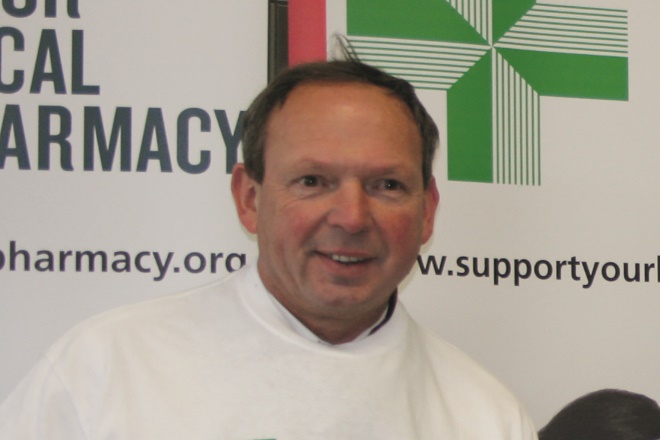
Source: MAG / The Pharmaceutical Journal
A petition launched in February 2016 proved to be the largest ever engagement exercise for pharmacy when it secured around 2.2 million signatures from patients and customers urging the government to reconsider cuts to pharmacy funding. Although the campaign did not change minds at 10 Downing Street, it showed just how effective pharmacy leaders can be in rallying public support.
Behind the campaign was Ian Strachan, chair of the National Pharmacy Association (NPA), which represents more than 6,000 independent pharmacies. “Together we won concessions – limited though they are – in the package imposed, and raised awareness of the value and offering of community pharmacy,” Strachan said, as the cuts came into force on 1 December 2016. “Perhaps most significantly of all, we have a larger than ever base of active political support, and this puts us in a strong position to fight for a better deal for pharmacy in the future.”
The NPA launched a judicial review against the cuts on 13 December 2016, the same day it announced its decision to leave umbrella trade body Pharmacy Voice.
Welsh innovator: Rory Wilkinson
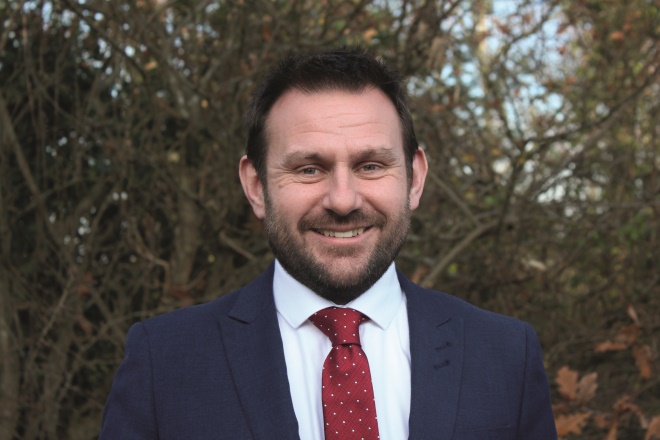
Source: Aaron Haley / BCUHB
Rory Wilkinson, head of pharmacy, primary care and community services at Betsi Cadwaladr University (BCU) Health Board, is the pharmacist behind the Healthy Prestatyn project in North Wales. Since 1 April 2016, the project has been pioneering a new way of providing primary care services for some 23,000 people, prompted by a crisis in GP recruitment. GPs have been joined by other healthcare professionals, including nurses, pharmacists, occupational therapists, physiotherapists, midwives and dieticians, to create a “broad well-being service”, under which patients are seen by the person most appropriate for their needs.
Five pharmacists are involved in the service and are responsible for managing the pharmaceutical care of around 5,000 patients. Community pharmacies within Prestatyn will also be integrated in the new model to provide a common ailments service, emergency medicines supply and discharge medicines reviews.
“Safety and excellence in medicine management are our priorities, helping to ensure prudent healthcare is at the forefront of prescribing,” Wilkinson told The Pharmaceutical Journal on 17 November 2016. “We have significantly changed the role of primary care pharmacy, which has traditionally been seen as a cost-saving role. Our pharmacists are part of the multidisciplinary clinical team, they are not just an add-on to save cash.” The model is now being extended beyond Healthy Prestatyn to other practices across the BCU area.


